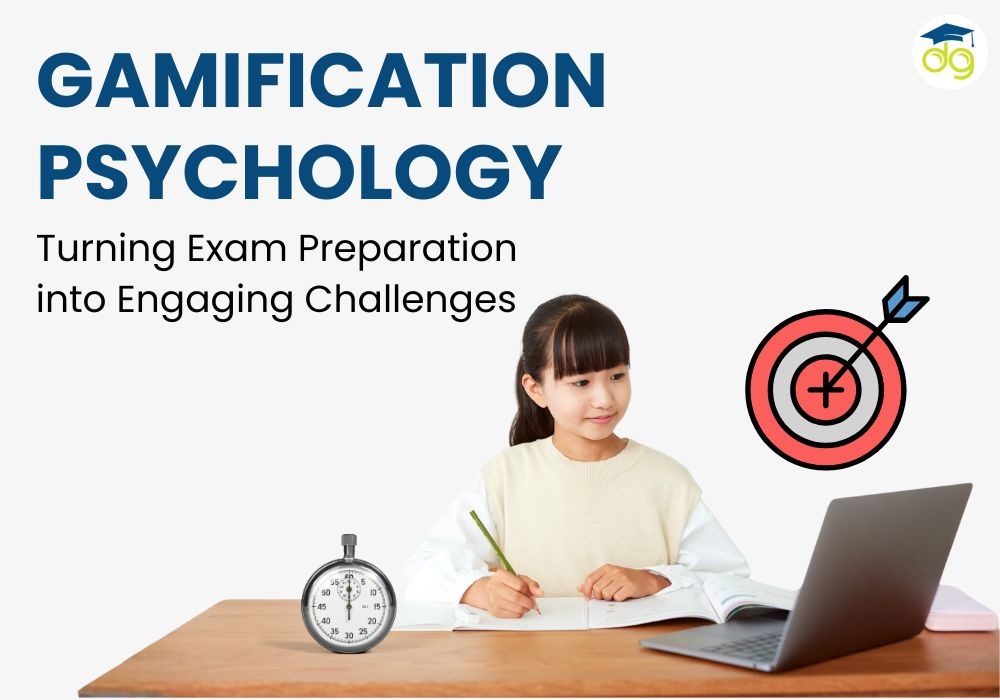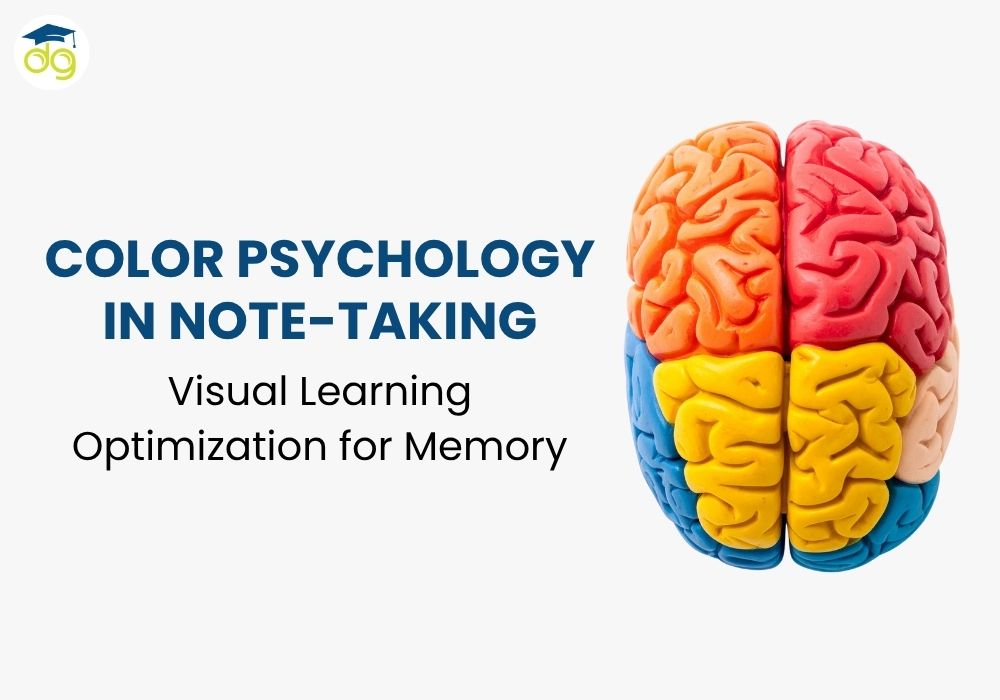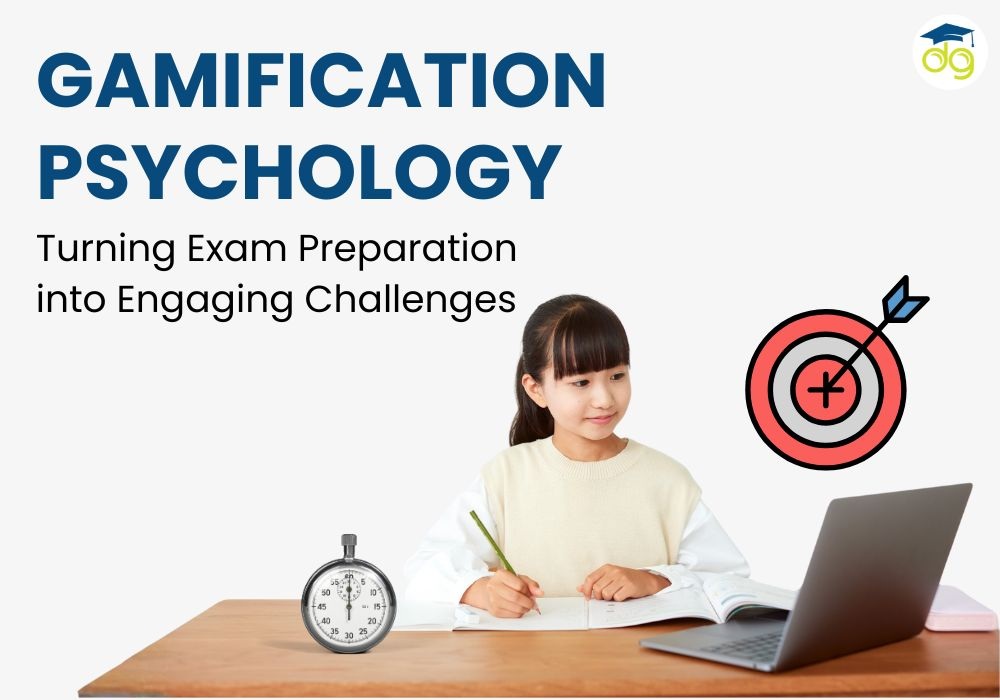Gamification Psychology: Transforming Exam Preparation into Play
How Gamified Learning Turns Stressful Exam Prep into Motivation and Fun
Year by year, Indian students slump over stacks of notes, flash cards, and hours and hours of cramming. But when the excitement wears off and pressure becomes intense, most of them can't help but ask themselves, Is there a better, more effective way of studying?
That is where gamification psychology enters the scene, a concept that is transforming student learning, practice, and engagement.
By adding elements of reward, points, and tracking progress to the learning routine, students are deriving more and more benefit from what was previously a routine drudge. Sites like skoodosbridge, which are always looking for ways to innovate, lead, and provide real learning, know that gamification of study is not just a fad; it is the future of education.
The New Age of Learning: Why Gamification Counts
With short attention spans, the new norm and instant gratification but a click away, holding students engaged using conventional methods of learning is challenging. Learning psychology research has established that people are internally motivated by goals, feedback, and a sense of progress, all intrinsic aspects of games.
Gamification psychology avails itself of that inherent motivation to make learning an adventure in achievement, not a chore. Rather than listening passively to chapters, learners can "level up" as they conquer concepts, earn digital badges for persistent practice, and compete with friends in low-stakes study games.
But aside from entertainment and novelty, gamification psychology impacts the brain through stimulating the reward neurotransmitter dopamine, which supports the maintenance of motivation for extended durations of study for exams.
The Psychology of Gamification Science
In essence, gamification works due to the engagement of potent human psychological drivers, competence, autonomy, and relatedness.
1. Competence – The desire to be skilled
Whenever learners unlock new levels, complete quizzes, or get virtual rewards, they feel successful. Feeling successful in such a manner encourages them to return to activities they would have otherwise avoided.
2. Autonomy – Freedom to Choose
Unlike strict study timetables, gamification systems provide flexibility. Students can decide to do what activity first, how to earn points, or when to take breaks, such that they feel like they are the masters of studying.
3. Relatedness – The Social Bond
Peer challenges, group leaderboards, and group study platforms socialise learning. It matches the community learning philosophy that skoodosbridge espouses, where connection strengthens understanding and development.
Together, these three pillars of gamification highlight why gamification doesn't just increase student motivation, but transforms the affective bond of students with learning.
The Issue: Test Anxiety and Research Fatigue
For the average student, exam preparation is usually stressful. Stress of having to deliver high, boredom of repetition, and loneliness when preparing are all causative factors for burnout.
Traditional study aids like dividing study time, flashcarding, or planning time are effective but cannot measure emotional commitment.
That is where gamification psychology excels. Not just does it organise your studies, it gamifies the study process. When studying preparation is turned into a game, rather than being exhausting, students remain engaged for longer and can handle stress more effectively.
How Gamification Boosts Student Participation in Exam Preparation
Let's look at how gamified aspects directly contribute to performance in exams:
1. Progress Monitoring Turns Fear into Success
Instead of a massive syllabus, a study tracker breaks the process into manageable achievements. Success in each category is imminent feedback and real progress, generating momentum out of fear.
2. Positive Feedback Produced by Rewards and Points
Each proper response or module completed can be obtained with points, stars, or virtual badges. This sense of accomplishment releases dopamine, the same neurotransmitter released when one wins at games, and reinforces learning behaviour.
3. Friendly Competition Fosters Consistency
Leaderboards and peer challenges keep students consistent. If applied judiciously, such study gaming encourages cooperation and friendly competition simultaneously.
4. Personalized Challenges: No Boredom
Gamification learning adjusts based on the students' performance, increasing the difficulty level over time or giving hints where needed. This adaptability aids in reaching a flow state, not too low that one gets bored or too high that one is lost.
5. Reduced Examination Anxiety
Where preparation is a series of small victories instead of a form of titanic battle, so too is stress. Students start anticipating study sessions with a feeling of curiosity and eagerness instead of apprehension.
Examples of Gamified Study Tools That Really Work
Today, in the world of education technology, some platforms and apps apply gamification psychology to great effect:
- Quizizz – Transforms quizzes into multiplayer games with instant feedback and high-contrast visuals.
- Duolingo – Applies streaks, badges, and daily quests to educate on languages (a worldwide phenomenon for making learning happen).
- Classcraft – Gamifies classrooms by turning lessons into quest-style adventures.
- Kahoot! – Motivates classroom quizzes with real-time engagement and team play.
- Habitica – Translates daily goals and study habits into role-playing missions.
Students using such tools report higher retention and lower stress levels. Teacher’s too, by applying gamification psychology in the classroom, see increased participation and better attendance.
How Teachers Can Adopt Gamification Psychology in the Classroom
Gamification isn't limited to apps. Teachers can integrate it into lesson plans and quizzes with little or no sophisticated technology setup.
1. Build Point Systems
Reward attendance in class, handing in homework, or taking review exams. Reward effort, not outstanding grades, to foster steady progress.
2. Structure Study Challenges
Turn weekly lessons into quests or missions. For example, "Finish the Algebra Quest" or "Survive the History Challenge" gives a lighthearted purpose to serious material.
3. Be Smart About Leaderboards
Show anonymous or group-based boards of progress to keep things rolling without fueling unwanted competition.
4. Provide Real Rewards
Certificates, praise notes, or little privileges can function as real-world motivators. Public recognition, after all, is one of the most powerful ways of positive reinforcement.
5. Foster Cooperative Play
Group tasks reflect multiplayer formats, building team morale and subject knowledge. This aligns with skoodosbridge's emphasis on cooperation and learning in a community.
Step by Step: A Guide to Gamifying Your Exam Prep Process
You don't need an app to gamify your study routine. This is a straightforward plan to stick to:
Step 1: Set Specific, Measurable Objectives
Rather than vague objectives such as "study chemistry," break it down into "do one chapter in 45 minutes." Reward yourself whenever you finish.
Step 2: Establish Your Own Reward System
Reward yourself with something, a treat food item, window shopping for 10 minutes, or a trip, after finishing 10 points.
Step 3: Track Progress As A Game
Maintain a progress tracker or have a whiteboard act as a progress tracker. Seeing your "XP bar" fill up is motivating.
Step 4: Compete (Positively)
Make a study partner. Make goals and check in with whoever scores higher, not to see who's better, but to motivate one another.
Step 5: Reflect and Reset
At the end of each week, assess which strategies boosted your performance and which felt draining. Adapt, just like a game strategy evolves after each level.
Can Gamification Psychology Lessen Exam Stress?
They do indeed. By turning tests into challenges instead of threats, students engage with them with curiosity and competence. Gamified systems emphasise growth and progress over punishment and perfection.
As one of the students told us at a session of feedback, "When studying feels like playing, failure just feels like retrying a level."
That mindset is worth its weight in gold, and one that Skoodosbridge champions actively by way of its education initiatives and leadership roles, fostering conditions whereby innovation meets emotional equilibrium.
Conclusion
The union of education and psychology has been about knowing the optimal manner in which human beings learn, with emotion, connection, and purpose.
Gamification psychology ensures that when these principles are merged with technology, learning is not only effective but enjoyable.
While skoodosbridge goes on to invest in educators, learners, and leaders who push beyond conventional paradigms, gamified learning is a formula for how we can transform preparation into engagement and anxiety into achievement.
The future of education is not to replace effort with enjoyment; it's to make effort enjoyable.
FAQs
1. How is gamification increasing student engagement in exam preparation?
Gamification takes advantage of the brain's reward system through mechanisms like rewards, trackers, and competition. Gamification makes study sessions manageable as small challenges that are rewarding to complete.
2. What are the best gamified study apps for exams?
Quizizz, Duolingo, Kahoot!, Habitica, and Classcraft are good ones. Each one brings motivation, engagement, and feedback to study routines.
3. How do teachers apply gamification psychology to the classroom?
Teachers apply point systems, quest design, rewarding achievement, and cooperative learning to make learning fun and interesting.
4. What is the role of psychology in gamified learning?
It is an important one; gamified learning utilizes psychology's theory of reinforcement, motivation, and emotional engagement to sustain the process of learning.
5. Will gamification eradicate exam pressure from students?
Yes. By situating the study in the context of progress and play, gamification eradicates pressure, induces positive emotions, and creates resilience against burnout.
6. Is gamification appropriate for all learning styles?
Nearly all of the students are helped, but the key is balance. Overuse of reward can have a boomerang effect; combining gamification with deeper reflection guarantees sustained motivation.
Categories
Archives
Similar Posts

Gamification Psychology: Transforming Exam Preparation into Play
by Skoodos Bridge

Parent Communication Strategies for Managing Exam Family Pressure
by Skoodos Bridge

Time Zone Study Scheduling for Indian Students in Global Coaching
by Skoodos Bridge

Budget Breakdown: Cost Analysis of Top JEE Coaching Institutes 2025
by Skoodos Bridge

Color Psychology in Note-Taking for Better Memory and Learning
by Skoodos Bridge

Mirror Neurons and Group Study: The Psychology Behind Collaborative Learning
by Skoodos Bridge

Music Therapy for Concentration: Playlists to Boost Focus While Studying
by Skoodos Bridge

Dopamine Hacking for Study Motivation: Neuroscience-Based Exam Prep
by Skoodos Bridge

Electric Vehicle Jobs: Top Mechanical Engineering Careers in EV Sector
by Skoodos Bridge


Leave a Comment